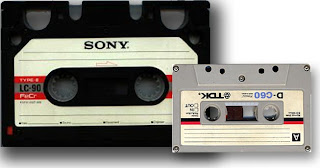 They say all good things must come to an end: the promised twelve months of
Electric Vivaldi blogs are officially up! But what better opportunity to bust
out some local legends who, like Nguyên Lê, have taken in a musical panorama that ranges
far beyond our humble Colorado mountain setting!
They say all good things must come to an end: the promised twelve months of
Electric Vivaldi blogs are officially up! But what better opportunity to bust
out some local legends who, like Nguyên Lê, have taken in a musical panorama that ranges
far beyond our humble Colorado mountain setting!Ron Bucknam is perhaps the most complete experimental guitarist you’ve never heard of, mining deep-seated veins of creativity for rare gems. Taking the same tired over-the-counter implements that overflow the aisles at Guitar Center - in this case, a pair of Applied Research and Technology effects processors he named Art & Bart - he 's dug up some epic cheats. Join his cult following as they disappear down twisted rabbit holes in the quest for avant-garde profundity... never to be heard from again. Bliss Tech - Ron Bucknam
Though young at heart, Neil Haverstick’s three-pronged performing, teaching,
and publishing attack has kept him for the hunt for the mantle of Elder Statesman of
the American Microtonal Guitar. And for any who might not actually reside in his
state of dissonance, he also applies earbending tunings to the blues and world music improvisations. His life-affirming energy can be glimpsed with the Stickman 19-Tone Power Trio, featuring Thomas
Blomster on drums and Mary Stribling - on 19-tone bass: African Stick - Neil Haverstick
In the spirit of the season, a brand spanking new Centaur Records enchanced compact disc, Electric Vivaldi: Global Solstice, has just appeared on Amazon and iTunes. It's a culmination of my own musical travels, but also a medley of holiday favorites mashed-up in the blender of all the influences we’ve been sharing these past twelve months – the perfect holiday gift for the guitar lover who has everything. There are even some East Indian Carnatic stylings inspired by my trip to Kerala, India with the Chuck Fryberger Films team: Electric Vivaldi: Largo on YouTube . May the New Year bring us all even more new unsung guitar heroes to sing and their inspired creative torches to pass!









.jpg)









.jpg)
